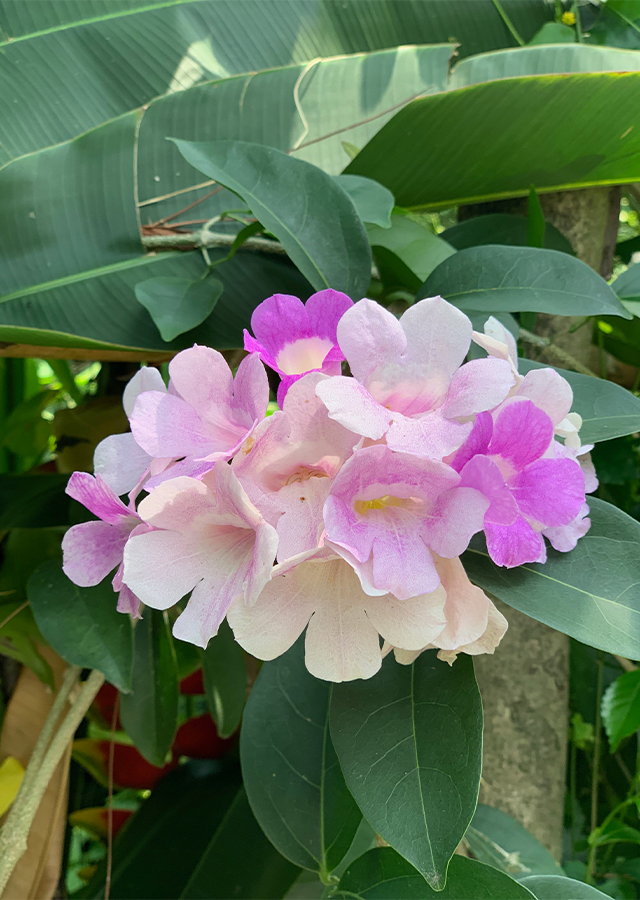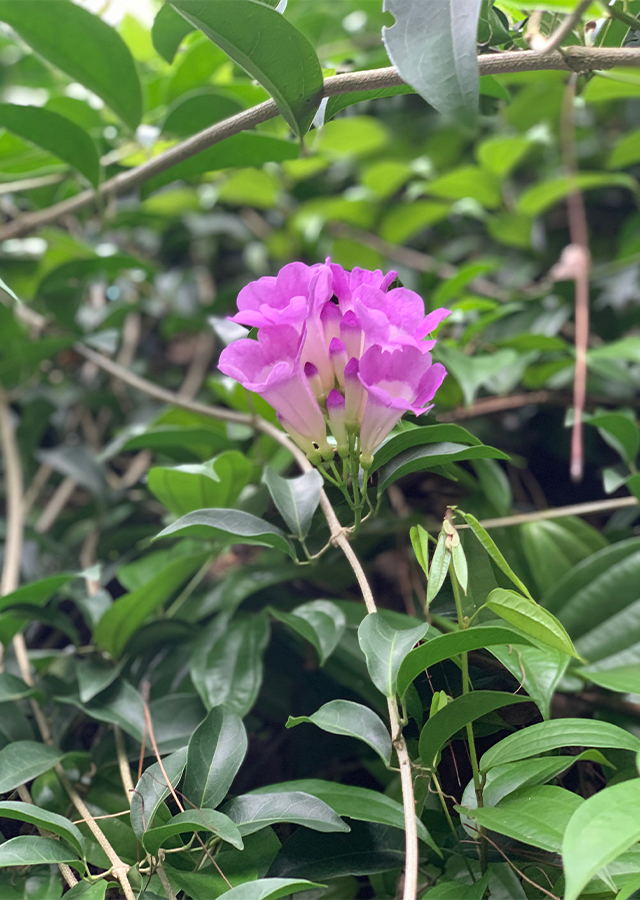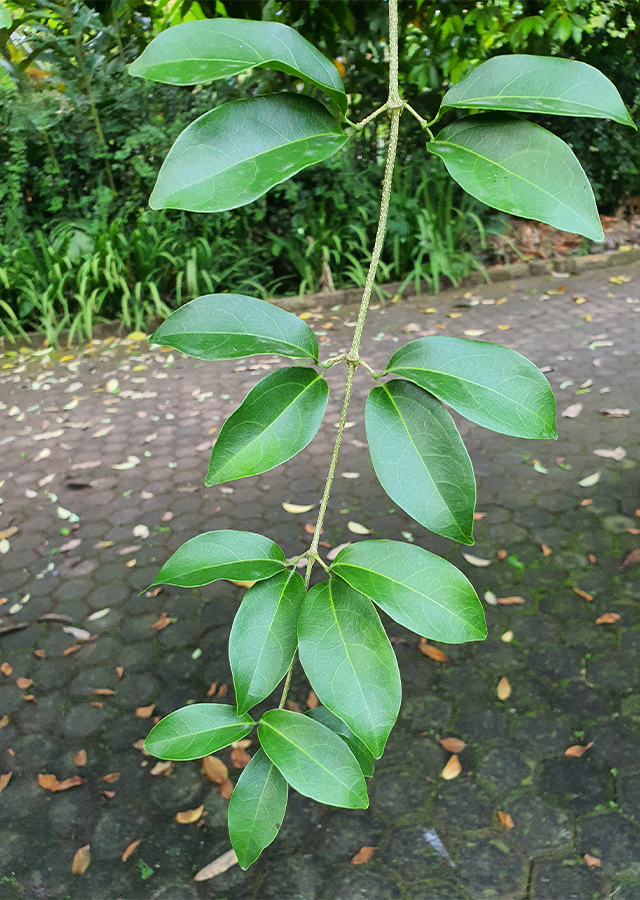Garlic Vine
Mansoa alliacea (Lam.) A.H.Gentry
Bignoniaceae
Location in our garden
Principal



Synonym
Adenocalymma alliaceum (Lam.) Miers
Anemopaegma pachypus K.Schum.
Bignonia alliacea Lam.
Habitus
Climbers. An ornamental evergreen vine that can reach 2.5-3.0 m tall. Known as garlic vine because the plant foliage smells like an onion.
Part Used
Leaves
Flowers
Roots
Stem
Growing Requirements
Full Sunshine
Habitat
Forest
Overview
Garlic vine is an Amazonian basin native plant. the plant has been recollected from several Latin American countries such as Bolivia, Brazil, Colombia, Guianas, Peru, and Surinam. in its native habitat, the plant is traditionally used as a medicinal and magic plant. The plant is also widely cultivated as an ornamental plant.
Vernacular Names
Garlic vine (USA), garlic shrub (England), garlic creeper (India), Liana à l ́all (France), Garlic creeper (India), Ajo sacha (Peru), Cipó-de-alho (Brazil), Bejuco de ajo (Venezuela).
Agroecology
M. alliacea prefers shaded or semi-shaded areas with low vegetation in an open or primary forest area. The plant thrives on solid, organic matter-rich soil on the non-flooded ground. The plant grows well in a tropical climate with 1800-3500 mm/year rainfall and 20-30°C temperature.
Morphology
- Stem - evergreen, semi-woody branches.
- Leaves - bright green, opposite, divided as two ovate leaflets, slightly coriaceous.
- leaves are divided into two ovate leaflets, up to 15 cm long, crushed leaves smell like garlic.
- Flowers - Violet, inflorescences terminal or axillary raceme, funnelform corolla, and campanulate calyx.
- Fruits - elongated, capsule.
- Seeds - broad and winged.
Cultivation
- Propagation is by seed and cutting.
Chemical Constituents
β-sitosterol, β-amyrin, β-sitosteryld-glucoside, luteolin, alliin, and numerous other compounds. The plant also produces volatile oil which contains many chemical compounds such as diallyl disulfide, diallyl trisulfide, and diallyl tetrasulfide.
Traditional Medicinal Uses
- In Surinam, the dried aerial parts infusion is used to treat fever, rheumatic pains and as a vermifuge.
- In Peru, the plant dried leaves are used to treat colds, pneumonia, malaria, and anti-rheumatic.
- In Brazil, the leaves infusion is used for colds, fevers, and headaches treatment.
- In the Guianas, the stems and leaves decoction is used as a wash to treat pains and muscular fatigue.
- The plant leaves tea is used to treat cough, nausea, epilepsy, and constipation.
- The plant leaves, bark, and roots are orally and topically used as an analgesic, antipyretic and anti-rheumatic.
- the leaves infusion can also be used to treat fever and cold, while the root aqueous maceration can be used as a tonic.
Part Used
Reference Sources
- Salazar, A.T., Scalvenzi, L., Lescano, A.S.P. and Radice, M., 2017. Ethnopharmacology, biological activity and chemical characterization of Mansoa alliacea. A review about a promising plant from Amazonian region.
- Tropical Plants Database, Ken Fern. tropical.theferns.info. Mansoa alliacea. http://tropical.theferns.info/viewtropical.php?id=Mansoa+alliacea. 01-11-2021.
- Zoghbi, M.D.G.B., Oliveira, J. and Guilhon, G.M.S.P., 2009. The genus Mansoa (Bignoniaceae): a source of organosulfur compounds. Revista Brasileira de Farmacognosia, 19, pp.795-804.


